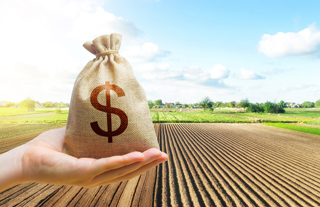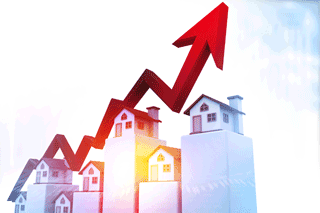Quote Of The Week
“Demand for housing remains exceptionally strong as the pandemic continues to push households toward lower density living. The more time people spend under lockdown and working from home, the higher is the demand for detached housing.”
HIA economist Tom Devitt
Economy Firing 2yrs Into Pandemic
 With the second anniversary of Covid’s arrival in Australia upon us, Australia’s economy is firing more than it was before the pandemic hit.
With the second anniversary of Covid’s arrival in Australia upon us, Australia’s economy is firing more than it was before the pandemic hit.
Australia recorded its first case of Covid on 25 January 2020 and with that came predictions of economic crisis. While there have been bumps along the way, the economy has bounced back in many ways including low unemployment, surging house prices and record stock values.
Steven Hamilton, a visiting fellow at the Australian National University’s Tax and Transfer Policy Institute, says the economy looks better coming out of Covid than it did heading in.
He says unemployment is 4.2% now compared with 5.3% in January 2020, house prices have increased by about 30% and the S&P/ASX 200 is above 7000 points.
While there are plenty of silver linings, according to Hamilton, there have also been enormous costs imposed on individuals and businesses. Financial stimulus used to help boost the economy has added $1 trillion to our national debt.
Lack Of Land Drives Up Prices

Land price increases have hit their highest level since 2006, with new figures revealing supply is struggling to keep up with demand.
The HIA-CoreLogic Residential Land Report on sales in 51 housing markets across Australia shows that, in the year to September 2021, the median price of land increased 12.6%. HIA economist Angela Lillicrap says the median price of residential land in Greater Sydney increased 32%.
“Land will be the biggest constraint on building activity over the next couple of years,” she says. “The current shortage of land will impact the industry at a time when the broader economy needs construction to help pull it forward.”
Land prices increased 14.7% in the combined capital cities and 8.6% in the combined regional areas.
CoreLogic Head of Research Tim Lawless says the surge in prices is not surprising given the huge demand from the Federal Government’s HomeBuilder grants.
ANZ Drops Rates, Matches Westpac
 The competition for home loan business continues with ANZ the latest lender to drop its variable rate. The bank dropped its rate by 0.2% for new customers, depending on the size of their deposit.
The competition for home loan business continues with ANZ the latest lender to drop its variable rate. The bank dropped its rate by 0.2% for new customers, depending on the size of their deposit.
Customers with a 30% deposit will pay 2.19% interest, while those with a 20% deposit will pay 2.29% interest.
RateCity research director Sally Tindall says the move by ANZ means it had now matched Westpac in having the lowest variable rate among the big banks. “Fixed rates might be on the rise, but competition in the variable rate market is still alive and kicking,” she says.
RateCity analysis found there are 72 variable rates of less than 2%. The competitive rates are mostly on offer for new customers, although Athena this week dropped its rates for new and existing customers. Reduce Home Loans is offering the lowest variable rate this week of 1.77% on a 20% deposit.
Some analysts are tipping an interest rate rise this year despite the RBA repeatedly saying it isn’t likely to lift the official interest rate until 2024.
Rents Price Out Essential Workers
 Soaring rents and low vacancy rates in many Australian capital cities are driving essential workers to the regions.
Soaring rents and low vacancy rates in many Australian capital cities are driving essential workers to the regions.
According to Domain rental data, lower income earners and essential workers are struggling to find affordable rental properties near where they work.
When analysing the latest employee earnings data from the ABS it found not one suburb in New South Wales or Victoria would be considered affordable for essential workers such as checkout operators, pharmacy sales assistants or kitchen hands.
The cost of renting a typical home in any Sydney, Melbourne, Brisbane or Perth suburb was likely to put many within the category of rental stress – that is when lower income households spend more than 30% of their wages on housing costs.
National Shelter executive officer Adrian Pisarski says rising rental prices are pushing essential workers into poorer quality accommodation.
All Sales Are $1m+ In 220 Suburbs
 Australia now has 220 suburbs in which every property that sold last year changed hands for $1million or more.
Australia now has 220 suburbs in which every property that sold last year changed hands for $1million or more.
CoreLogic data shows Sydney accounted for nearly two-thirds of those suburbs, with 135 suburbs where every sale was worth more than $1 million.
As property prices continue to rise, smaller capital cities Brisbane and Adelaide are expected to feature strongly on the $1million-plus list this year. CoreLogic Head of Research Tim Lawless expects regional markets, especially those within commuting distance of the larger cities, will also experience an increase in premium value sales.
There are 27 Melbourne suburbs where every house sold for more than $1million, regional NSW recorded 37 suburbs, regional Victoria has six suburbs, Queensland has four and WA has one. In the ACT every house sold in Deakin, Campbell, Forrest, O’Malley and Hall achieved $1million or more, while in Adelaide three suburbs chalked up all $1million-plus sales




